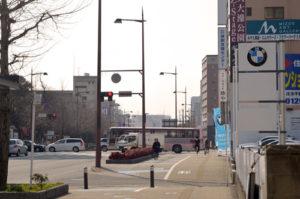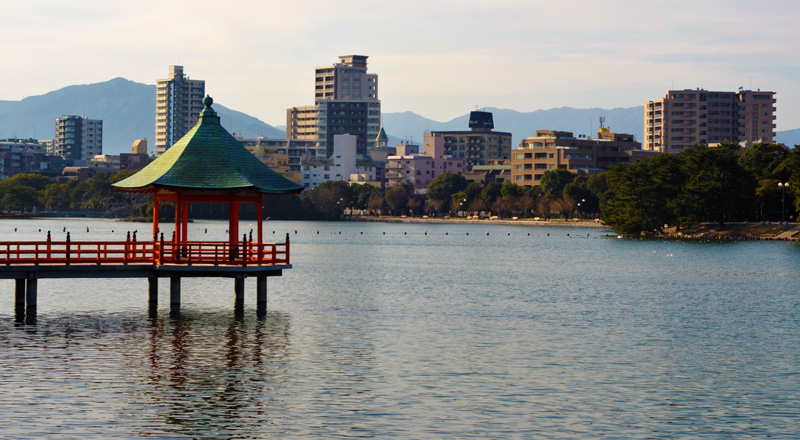Please note: All information in this article is current as of early 2013. If viewing this well in the future, logistics and numbers may vary.
If you’ve been here awhile (or at least long enough to be changing jobs), you’ll have learned that if you have a tourist, student, or non e-2 visa, Korea requires foreigners to physically leave the country, and attain new visas at a foreign Korean consulate. If you’re already here, the closest Korean consulate is in Fukuoka, Japan. It is served by both ferry and airplane from Busan. This does not apply if you are renewing your E-2. Only if you are switching from another visa to an E-2. Please check with immigration and your future boss to be sure it is required!
 Getting to Fukuoka
Getting to Fukuoka
In theory, your hirer will set up the travel arrangements for you. It is common practice for schools to pay for a new teacher’s visa run, and Korean travel agencies have package trips that also include a hotel stay.
If you end up with a plane flight, you’ll be using Gimhae International Airport. In this case, you’d most likely take an airport bus from Changwon. Here is our guide for that. If traveling by ferry, you’ll be heading to the Busan Port International Passenger Terminal. If you take a intercity bus to Sasang in Busan, you can jump on the subway, and go to Jungang-dong station on line 1. (There’s a transfer at Seomyeon, and the whole subway ride should take about 30 minutes.) Remember: if you are traveling by ferry, there is a terminal fee for each passenger of around 30,000 won.
 Getting around in Fukuoka
Getting around in Fukuoka
Fukuoka’s signage, directions and everything else has far less English than in Korea. Furthermore, unless you’ve already studied Japanese, the written language, unlike Korea’s, isn’t exactly something you can pick up in a weekend. It’s recommended to get a tourist map or guide book of town either before, or soon after arriving. The airport is on the subway line, which has English signage, and well branded stations, with individual logos for each stop, making it easy to use. However, the ferry terminal is served only by city bus. Bus stops don’t really have a lot of English (sometimes none at all) so it’s important to know where you need to go before hand.
Buses are different than Korea. You get on the bus via the middle door. Unless you have a city bus pass, you take a bus ticket from the dispenser as you get on. This pass will have a number on it. This number corresponds to the interface above the driver at the front of the bus. As the bus continues along, the cost for each number increases. Continue paying attention to your ticket’s number to know how much your fare is. When you want to get off the bus, press a button (just like in Korea) and make your way to the front. Drop the ticket and correct fare into the slot at the top, and leave out the front door. Don’t have change? There is also a bill collector to break down 1000 yen bills. People can be seen getting change this way well before they get off the bus.
As a tangent, you might be surprised by the calm demeanor of bus drivers, who often narrate their actions in a low, soothing voice. Also, they often turn the bus completely off if they are going to be stopped at a light for a long time.
Getting to the Korean Consulate

The easiest way to get to the consulate is the subway. Take the subway to the Tojinmachi station on the Kuko line. The station is number K05, and is marked by a brown/orange ceramic bowl-like logo. To buy a subway ticket, use the map above the payment machine to know how much it costs to get where you are going, and buy a ticket of that value. If you are transferring lines, be careful: you need to exit through one gatepost and reenter another one. Those transferring, must use specific gateposts. If you use the wrong one, the post will not think you are transferring, and it will eat your ticket, forcing you to buy another. Look for the signs.

Once you arrive at Tojinmachi station, exit out of exit 1. Continue down this road until the first large intersection. This is Jigyo and as of this writing, the corner is a BMW dealership. Take a right on this street and head down the road for about 10 minutes. If you’re going the correct way, you’ll see a tall building far ahead (the Fukuoka Hilton) and an obscured view of the Yahoo! Korea Dome.

After walking for 10 minutes, you’ll come to another large intersection (Jigyo 3- chome). Diagonally across the intersection is the Korean consulate. It’s white, with traditional slopped Korean roofs. The wall around the facility features yin-yangs.
Show your passport and appointment number to the security guard, who may or may not speak neither English nor Korean, and fill out the entry form. You’ll be let inside where you can submit your documents. After that, you can leave and come back the next day to pick up your visa.

Other things to do in Fukuoka
In all likelihood, you’ll have some time to check out the city. Fukuoka has lots to do, and is easy to get around. Sites include the Fukuoka Castle ruins at Ohori Park, Fukuoka Art Museum, Fukuoka Asian Art Museum, various shrines, and the Asahi Beer Factory (tours require appointments). There is tons shopping, and street vendor ramen is extremely delicious. A great resource for maps and tourism is Fukuoka Now, a magazine/web site/tour map for foreigners, available throughout the city.

Final thoughts
Remember, if you’re traveling by ferry, you’ll also have pay another passenger fee at the terminal (about 3000 yen) going back. If you need wifi, Fukuoka recently started offering a free wifi service in every subway terminal and select other government buildings. It’s quick and easy to sign up. That about covers it. If there’s anything we missed, let us know. Here’s a list of other resources:
 Changwonderful
Changwonderful



















